One of the challenges of having a service dog like Ethan in your house, when he’s not in service of you, is remembering that you’re just there in a supervisory capacity; you’re not “the customer” for the magic powers of the dog.
In our household this means that [[Catherine]] and I have to allow Ethan’s primary bond be with [[Oliver]].
And most of the time we’re successful at that.
And then there are lapses.
Like last night. Ethan was exhausted after a day of playing with a new ball that friends helpfully left him on Saturday when he took a shine to it. When I put the ball away at the end of the night so he could calm down, he was distressed, and so in an effort to calm him down I invited him up on the chair with me. Where he immediately fell fast asleep.
If you ever harboured any doubts that a 65 pound standard poodle could be absolutely adorable, it’s time to let them go.
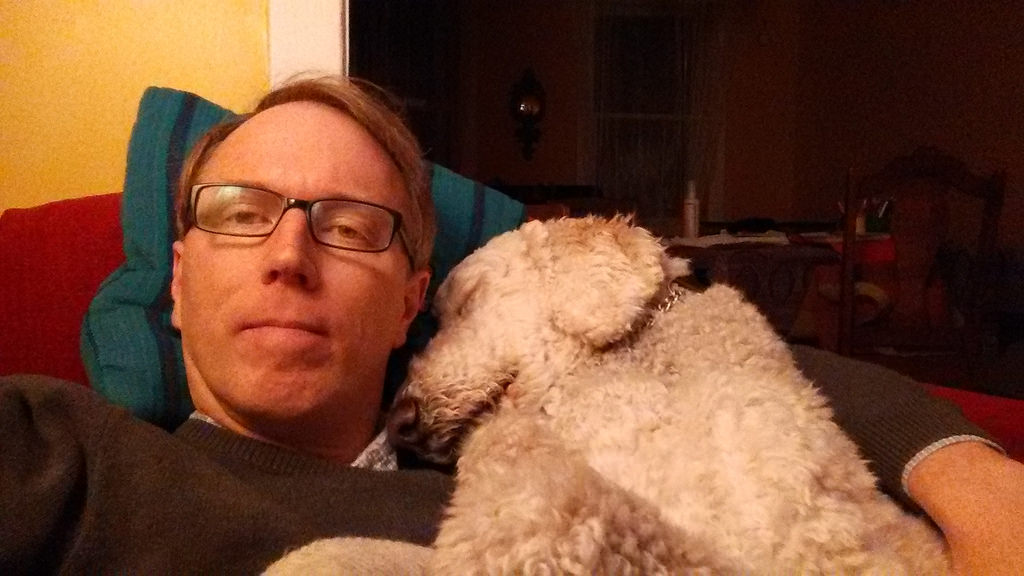
Earlier this year I mentioned to Premier Wade MacLauchlan that 2015 was the 20th anniversary of the establishment of www.gov.pe.ca, the official website of the Province of Prince Edward Island, and a project that I helped found.
I suggested to the Premier that it was high time to recognize the contributions of Carol Mayne, the public servant without whose skills and tenacity the site never would have seen the light of day. I’m happy to report that there was a celebration of exactly that this afternoon: Carol, along with the members of the original web team and the current web team all gathered for cake and a chat. It was wonderful to see everyone and to hear the old stories about when the web was young.
Among the artifacts of the earlier digital age on display at the even was a photo of the web team taken when the project was awarded recognition during French Language Services Week sometime over a decade ago. This afternoon we gathered together in the same room to take the same photo; here’s old me vs. new me cropped out of both photos:
 |
 |
My how I’ve shrunk in the intervening years.
I’m smiling in both photos, though; that’s the important thing.
One of my favourite stretches of road on Prince Edward Island is Route 12 north from Route 2 to Alberton. It’s a road that runs through the heart of Cascumpec, through hills and valleys, over bridges, through twists and turns, with stunning views of Cascumpec Bay along the way.
I drove the route tonight at dusk en route to Alberton for a home and school meeting. The leaves were at peak; the weather cleared from rain as I crossed through the peat bog heading west from Miscouche; conditions were perfect.
The first time I drove Route 12 to Alberton was 22 years ago, one stop on a series of visits to Island crafts producers when I started my work with the PEI Crafts Council. I drove up to visit Herb Leavitt, who made things out of bird’s eye maple from his shop at the corner of Church and Prince William. He was a genial host; over tea and a biscuit he told me about his craft, and then took me on a tour of his shop.
Herb died 4 short years later, in 1997, and in 2012 the former home of Leavitt’s Maple Tree Crafts, the shop I’d toured at at the corner of Church and Prince William, was demolished.
I returned to Route 12 in 2001 and 2006, in both cases to visit the Princess Pat Drive-in, a singular place to watch a movie with a view over the bay, a solid canteen, and friendly staff. It too is no longer, alas; it suffered wind damage in 2008 and closed shortly thereafter. It was for sale for a time, and I must say that I gave more than passing thought to acquiring it. I could think of many things worse than living out my days changing the reels in the projection booth while the residents of greater Cascumpec lined up for popcorn. But it was not meant to be.
The home and school meeting in Alberton was engaging: parents from Alberton and Bloomfield gathered to talk about the PEI Home and School Federation resolutions process. There was much good discussion of education, and I emerged sure in the knowledge that the good ship ship home and school is well-tended in West Prince.
Eating
- Breadworks, the bakery recently relocated to Charlottetown (off the alley between the Atlantic Technology Centre and David’s Tea), makes the bread you wish you always had ready access to. I’ve been working hard to work a bread-pickup into my weekly routine; so far we’re managing to pick up a loaf every Saturday afternoon. This is truly the kind of place that can change your relationship to bread.
- Phở Hưng, on the water end of Queen Street near the Delta Hotel, not only makes tasty Vietnamese food, but it is owned and operated by some of the nicest people you’ll ever meet. I have now achieved the status of being able to walk in, nod yes when they ask “the usual?”, and have a plate of seafood fried rice in front of me a few minutes later.
- The new Nordic Breakfast at Receiver Coffee is my new favourite meal there: toast (from Breadworks bread), smoked salmon, vegetables, pickled onions and cheese. I would have it every day for breakfast if I could afford it. Take note that the kitchen is more consistent during the week, so I recommend you start out with a weekend morning Nordic to experience it at its best and then use that as a baseline.
- I stopped eating most sugar three years ago, and I’m at the point now where eating a Mars Bar would send me into some sort of toxic shock. My sole remaining connection to the world of dessert is the weekly salted caramel chocolate I split with [[Oliver]] at the Charlottetown Farmers’ Market from the Nurturing Essence Raw Chocolate stand operated by Katlin Doyle. Whatever it is in regular factory chocolate that sends me into a dietary tailspin is missing from Katlin’s creations.
Equalizing
- We signed up for an Access 2 card this summer; a product of an initiative of Easter Seals and various theatres and cinemas, it entitles one person accompanying [[Oliver]] to free admission. So far we’ve used it only at Cineplex, but there’s a long list of theatres and attractions that accept it.
- We’ve been the beneficiaries of Air Canada’s excellent services for customers with special needs over the last year. This includes accommodations for [[Ethan]] to travel in the cabin with us, to a free companion fare for Canadian flights for someone accompanying Oliver. The Air Canada Medical Office is staffed by friendly, efficient people who answer phone calls and emails promptly and helpfully. It is a model for other airlines.
Traveling
- On the way to and from Oslo last month we transited through London Heathrow, and in both directions we booked a room at the Thistle Hotel (a day room on the way there, an overnight on the way back). It’s a quick Hotel Hoppa ride from Terminal 2 (Air Canada), and Terminal 5 (British Airways) is a quick ride by automagical POD from the back parking lot. We had some service glitches on the overnight stay related to [[Ethan]] staying with us – a cab refused service, the hotel dining room initially told us Ethan couldn’t eat with us, a 20 pound “pet fee” was tacked on to our bill – but these were so quickly and deftly dealt with and apologized for by the manager as to endear me to the property. We’ll stay there whenever we’re passing through Heathrow.
- Once we discovered that our Airbnb rental in Oslo was up a steep hill from public transit, we rented a Ford S-MAX, a minivan the company only sells in Europe. It comfortably accommodated 7 people, and was, it turns out, a joy to drive. It also had fuel economy of 5.5 litres per 100 km, which is about twice as good as the 2000 Jetta sedan (which uncomfortably accommodates 4 people) we drive at home.
- Twice this summer we rented a car from Avis to drive back and forth to Halifax, reasoning that it’s best to preserve the Jetta’s last years for on-Island puttering. And both times we ended up with the same white Chevy Cruze hatchback. Despite my strong feeling about gratuitous use of the letter Z, the Cruze turned out to be a joy to drive and I’d happily rent one again. It also turns out to be super-easy to rent from the downtown Charlotteotwn Avis office if you book in advance and are an Avis Preferred member; it’s not quite “walk in, receive keys,” but it’s pretty darned close. To the point where life-after-Jetta might be simply rent-on-demand.
Watching and Listening
- I really enjoyed the Steven Spielberg film Bridge of Spies. It was beautifully shot, well-acted and directed, and has a lovely score by Thomas Newman.
- Here are the fall TV shows I’m enjoying: Downton Abbey, The Blacklist, Scandal, The Affair, Quantico, Madam Secretary, Modern Family, Homeland, Narcos, The Bridge and Mr. Robot. Of those, Homeland and Downton Abbey are the ones I’m most passionate about.
- I’ve been promiscuously flipping back and forth between Rdio, Spotify, Google Music and Apple Music subscriptions to stream music into the office. The the arrival of an Apple TV developer box a month ago, I’ve settled on Apple Music for the time-being; I eagerly await the arrival of the Android Apple Music app as a result.
- Podcasts in my Pocket Casts app on my phone in regular rotation: This American Life, Serial, Radiolab, Planet Money, 99% Invisible, Invisibilia, WTF, StartUp, Reply All, Canadaland, Mystery Show, and Kermode & Mayo’s BBC Film Reviews. Pocket Casts, by the way, is a great podcast app for Android that gets better with every release.
- The WTF episode featuring an interview with James Taylor was gripping. I had no idea Taylor had lived such an interesting life.
Pointing and Clicking
- I’ve switched, at least for a few months of testing, from my stalwart text editor, BBEdit, to using Sublime Text. The transition was mostly smooth, and I really like the Git integration in Sublime Text. I’ve not 100% the switch will stick, but signs are good.
- Apps on my Android phone’s home screen: shortcut to call [[Catherine]]’s mobile, Tiny Tiny RSS, Twitter, 1Password, Authenticator Plus, Gallery, Yatse, SeriesGuide, Google Calendar, Camera.
- I managed to render my Moto G second generation useless the day before we left for Oslo (I tried to trim down a full-size SIM card and managed to get it stuck, and then managed to damage the screen while levering it out). Needing a phone for our trip, I simply replaced it with another Moto G from Staples (where they’re sold unlocked and are generally in stock). It’s not the perfect phone, but it’s relatively cheap (less than $300) and capable enough for almost everything I want to do with a phone. On occasion I lust for the sexiness of a iPhone 6S or a Nexus 6P, but I can’t imagine carrying around a phone that costs more than $1000 in my pocket.
I have been a happy member and customer of Coop Energy for more than 20 years. The service has been great, the people friendly and helpful and, more than anything else, I’ve been happy to be able to purchase home heating oil from a cooperative enterprise.
And so I was dismayed to find, upon returning from vacation this week, that Coop Energy is no more: its assets have been taken over by Ultramar, which is a division of CST Brands, “the second-largest publicly traded fuel and convenience retailer in North America.”
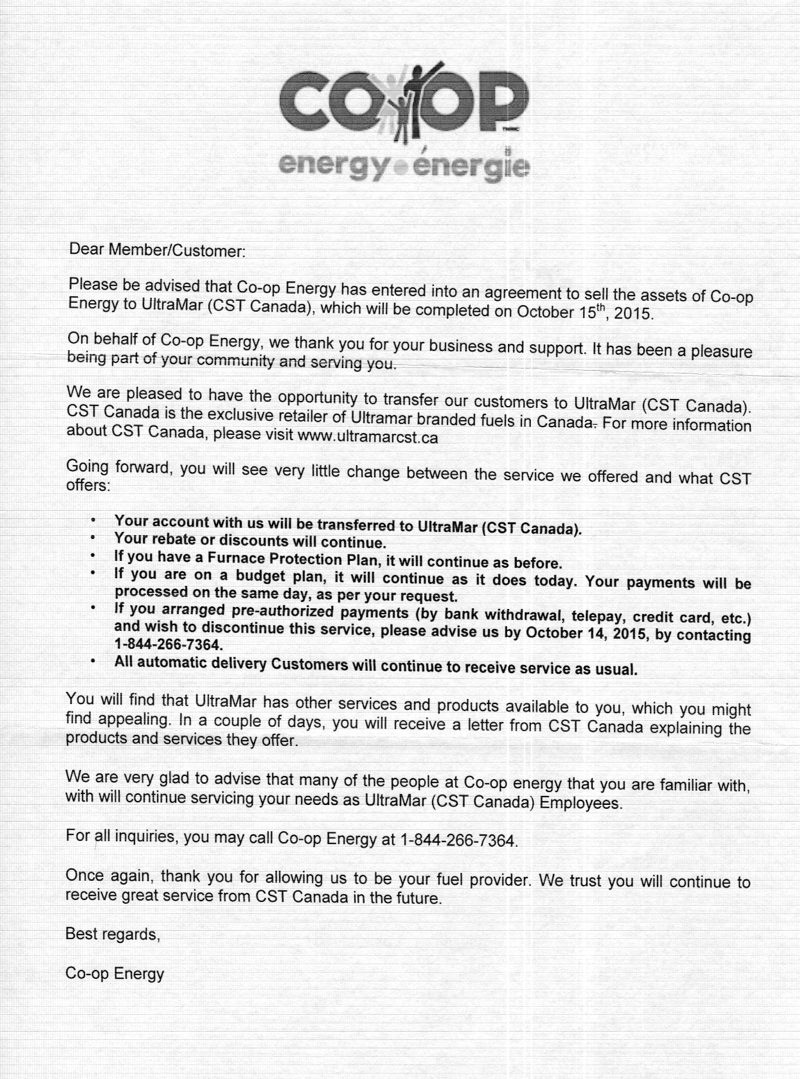
I’m not entirely sure I want to be a customer of Ultramar’s, and so yesterday I send an inquiry to the suppliers of home heating oil in Charlottetown – Kenmac, Island Petroleum, Bluewave, Irving and Ultramar – asking them about the services, their billing procedures, and, most importantly, their ownership structure.
So far the only company to respond has been Ultramar: I received a call this morning from a former Coop Energy employee, now presumably employed by Ultramar, from their New Brunswick office, offering to answer any questions or concerns I might have. She took great pains to reassure me that nothing would change: I would still call the same number, I would still be dealing with the same employees, the same discounts and rebates would apply.
My response was that while all of that might be true, from my perspective everything had changed, as Coop Energy was a coop and Ultramar is a branch of a large multinational corporation. She agreed that there wasn’t much she could do about that.
Of course it’s not like there’s anyone selling artisanal locally-produced home heating oil here in Charlottetown: they’re all dipping into the same well, so to speak. But I care about the way that businesses I purchase from are owned and operated, and home heating oil is by far and away the household expense I spend the most money on every year, so to the extent that’s it’s possible to exercise some influence through the kind of company I purchase from, I’d like to. It can’t be a coop now, alas, but perhaps it doesn’t have to be a multinational either?
I welcome comments from customers of other providers here in Charlottetown (or from the providers themselves).
While [[Catherine]] was off acquiring quality Swedish clothing yesterday afternoon, [[Oliver]] and I were left to our own devices. As we wandered about the Grünerløkka neighbourhood we came upon a building labeled Deichmanske bibliotek. Being a bibliophile, I was naturally curious. But also wary: what was this “Deichmanske,” I wondered: perhaps some sort of Norwegian religious cult? We didn’t want to get wrapped up in something.
But, wandering around to the other side, we spotted a sign suggesting that there was an exhibition of comics inside. So, cult-be-damned, we tentatively walked in the front door and found a series of panels lining the stairway:
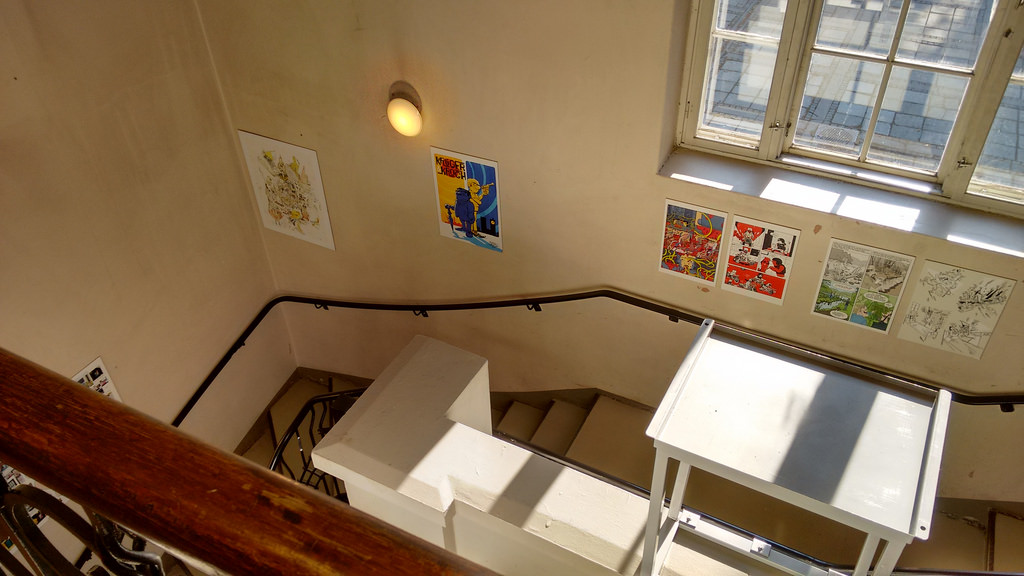
Still somewhat apprehensive – cult? trespassing? – we made our way up the stairs and at the top we were greeted with this sign:
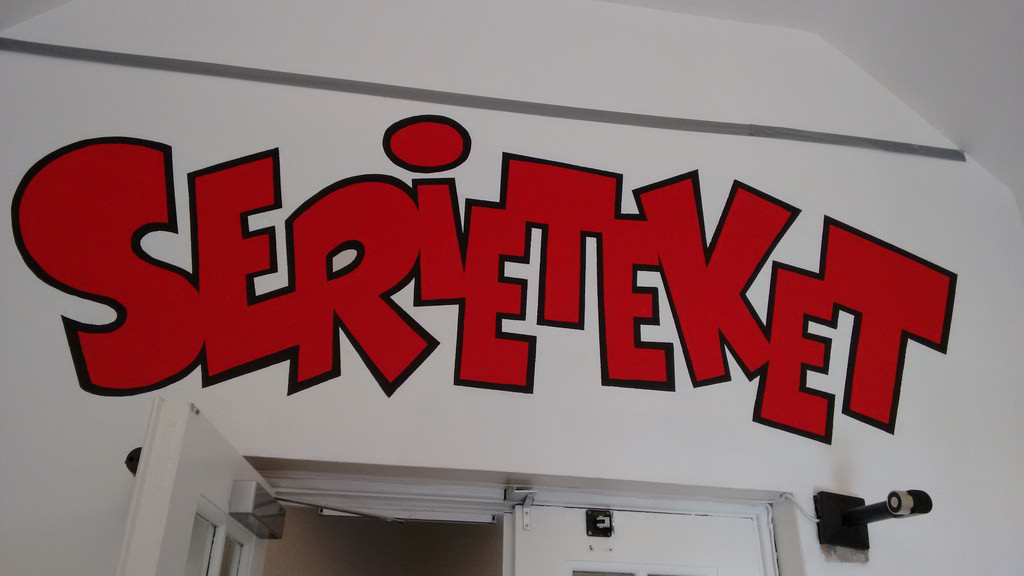
So, maybe still a cult. But a cult with some graphics chops.
Continuing in – we were commited now – we came upon this scene:
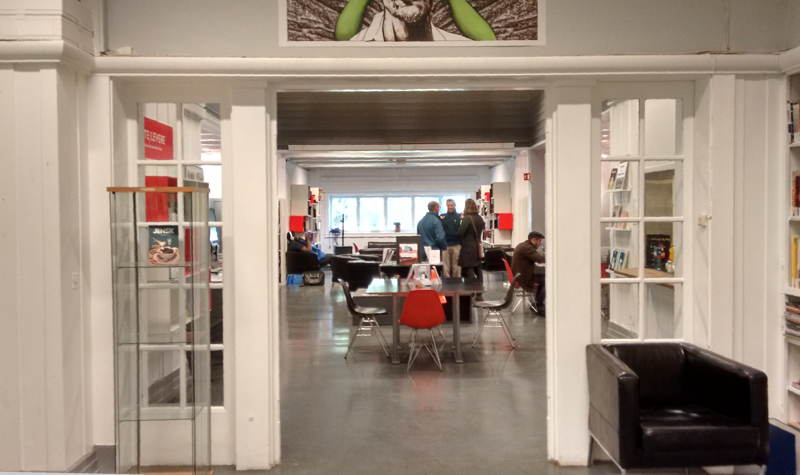
It was a room – a large, interesting room – lined with what appeared to be comics and graphic novels, and filled with people reading them. Bravely making our way across the transom, we inquired at the desk: “Is this a comics library?” “Yes, was the reply. Let me know if I can help you find anything.”
Wow.
What a library it is: the collection includes everything from Donald Duck to Seth. There is also – you can see it in the right, just a bit, in the photo above, a canteen. So, basically, you never have to leave.
We spent a very pleasant hour browsing the collection, including Omrokering, a rather intriguing book that helped us learn the Norwegian words for many parts of the house:
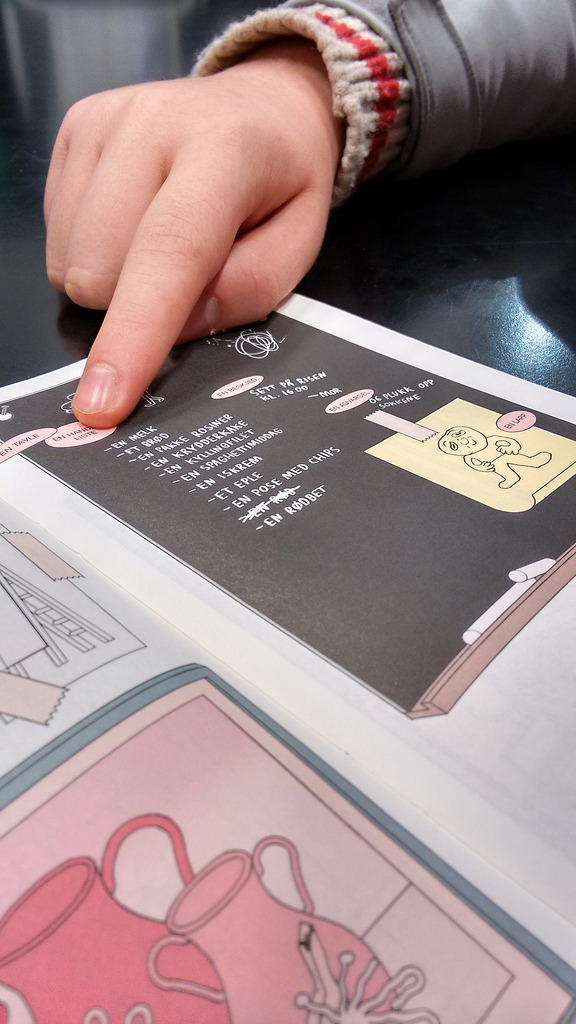
The Deichmanske label, it turns out, extends from the original patron of the Oslo library system, Carl Deichman, whose 1785 donation of 6,000 books established the library.
Sometimes it’s worth walking through the front door, even if you’re afraid of what’s inside.
My high school biology teacher, Judy Libman, taught me many things. Some of them, I’m sure, were about biology. But the most valuable lesson she taught me is that people like to talk about themselves.
For a naturally curious person like me this was a fantastic gift: I became suddenly aware of an entirely new way of satisfying my curiousity; all I had to do was talk to people.
Brian Grazer says much the same thing in his book A Curious Mind:
First, people—even famous and powerful people—are happy to talk, especially about themselves and their work; and second, it helps to have even a small pretext to talk to them.
This notion has served me well over the years, and is responsible for getting me into most of the interesting diversions I’ve taken in life.
In recent years it has turned out that being a printer – even a nascent printer just finding his way – provides the “small pretext” I need. And if not being a printer, being a Hacker in Residence is good too. It’s not as though I can phone up Warren Beatty and be put through because I’m a well-known printer-hacker, but rather that when I phone or email interesting-sounding people cold, I have a way of introducing myself that’s better than “um, I’m a guy, from Canada, um, and…”
I used this secret superpower this week when I tracked down Ane Thon Knutsen, seemingly Norway’s only letterpress printer. I asked her if it might be possible to drop by her studio for a chat while I’m in Oslo; she got back to me quickly with the apology that she’s on maternity leave, and her studio isn’t active right now.
But she did suggest that I try to visit its former home, in Fellesverkstedet, a cooperative workshop in central Oslo. So I dropped Fellesverkstedet a line, and project leader Graham Hayward invited me to drop by the shop this afternoon we had a great chat.
Fellesverkstedet is, in its current “pilot” incarnation, equipped with a wood shop, digital fabrication shop and a screen printing shop; they’re deep into the process of moving to a newly-acquired home, and the pilot site is, among other things, a way of testing out layouts and facilities for the new place.
More so that anything infrastructural, though, Graham’s greatest insight was about hiring staff: to allow users of Fellesverkstedet’s facilities to receive training in a non-threatening, supportive manner requires hiring non-threatening, supportive staff, and they have found that hiring people like bartenders and restaurant servers generally works out much better than hiring technicians. Technical skills can be taught; the skill of making someone at ease when they walk in the door for the first time is much more difficult to train for.
This echos my own experiences visiting maker spaces and community print shops: those with a host at the helm are successful and engaging; those with a technician at the helm feel like spending time in a customs line-up.
“Welcome, how can I help?”, in other words, trumps “Where’s your USB stick?” every time.
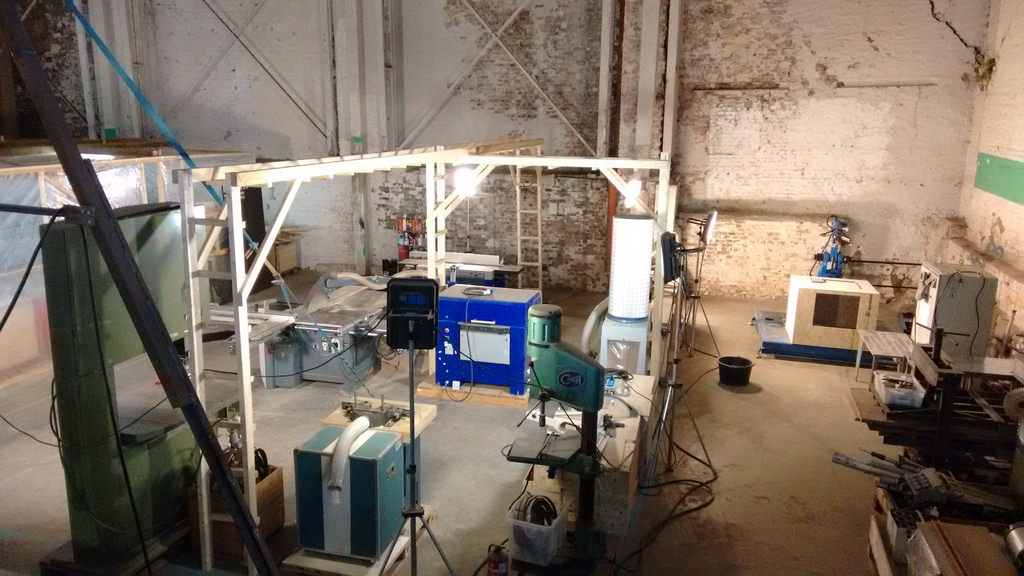
Here’s a screen shot of my Moto G mobile phone at this hour. I draw your attention to two items: first, the battery (the tiny icon in the top left next to the time) is at about 50% and, second, I have 39 megabytes left of the 250 MB that were included in my 99 NOK Netcom 14 day plan:
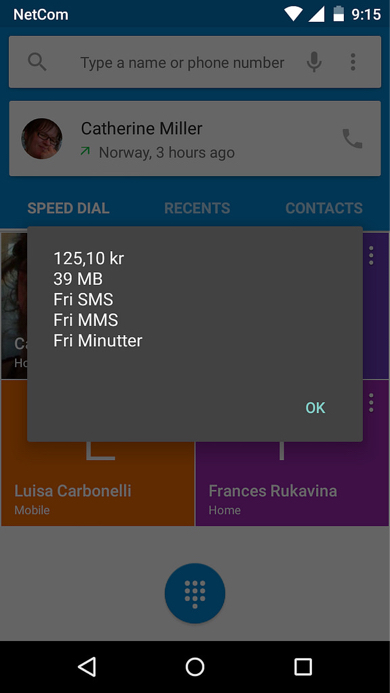
Something I’ve noticed on recent travels, where I’ve relied on my phone more than ever before to direct me, is that as my battery life dwindles (and, in this case, as my amount of available data dwindles), a background level of travel stress increases in reverse proportion: it feels a bit like I’m Batman locked in a Plexiglas box the oxygen of which is slowly being withdrawn by Penguin.
As I mentioned in 2013 when we returned from a trip to Japan, Google Maps is now an indispensable part of our travel kit: it’s how we navigate public transit and, on this trip, with a minivan ferrying my family around, it’s how we navigate the confusing highways and byways of major cities. On this trip we’re staying in an Airbnb out in the suburbs, perched high in a confusing rabbit warren of streets overlooking Oslo Fjord, and so getting anywhere without getting hopelessly lost has required Google Maps’ calming voice at my side – “In 300m, at the roundabout, take the 3rd exit…”
But what if the battery goes dead! What if I use up all my data! How will I know which exit at the roundabout to take?
How will I call Catherine to arrange a post-art-gallery rendevous?
How will I take pictures?
How will HQ text me when the server needs help?
The aforementioned minivan has been a help on this trip in this regard – not only can it ferry 7 people, but it can charge my phone too. But even with that, out and about in the city, as the sun sets and the battery dips below 30%, I get a feeling in the pit of my stomach.
Presumably this is an interregnum issue only: batteries will eventually last forever. Or at least until the end of the day. And mobile data will be free and ubiquitous (the young folks wouldn’t believe me if I tried to explain how we used to be billed by the minute for the Internet).
But for the time being, as useful and indispensable as phones have become for travel, they also add a dose of their own stress to the mix.
Perhaps I should carry a backup sextant.
Here are seven great things I found in Oslo today:
- Coffee at Fuglen. Twice. Very, very good.
- Comic book shopping at Tronsmo. Indeed any book shopping, as they have a stellar selection of books the likes of many of which I’ve not seen elsewhere. In a lovely, bright space.
- Travel book shopping at Nomaden. Bought a book on Mongolia. Best travel book shop since the late, great Globe Corner Bookstore in Boston.
- Stationery shopping at Norway Designs. The basement papir shop has an excellent selection of paper, envelopes, pens, bookbinding tools, paperclips and more.
- A cheese and salami sandwich, with clementine juice, at Baker Nordby on Hambros Plass 7.
- The Arkitekturstriper – Architecture in Comic Strip Form – exhibition at the National Museum – Architecture. Oliver and I spent a couple of hours at it. Fantastic.
- Frogner Park at sunset. Who would have thought a sculpture park could be so moving. But it is.
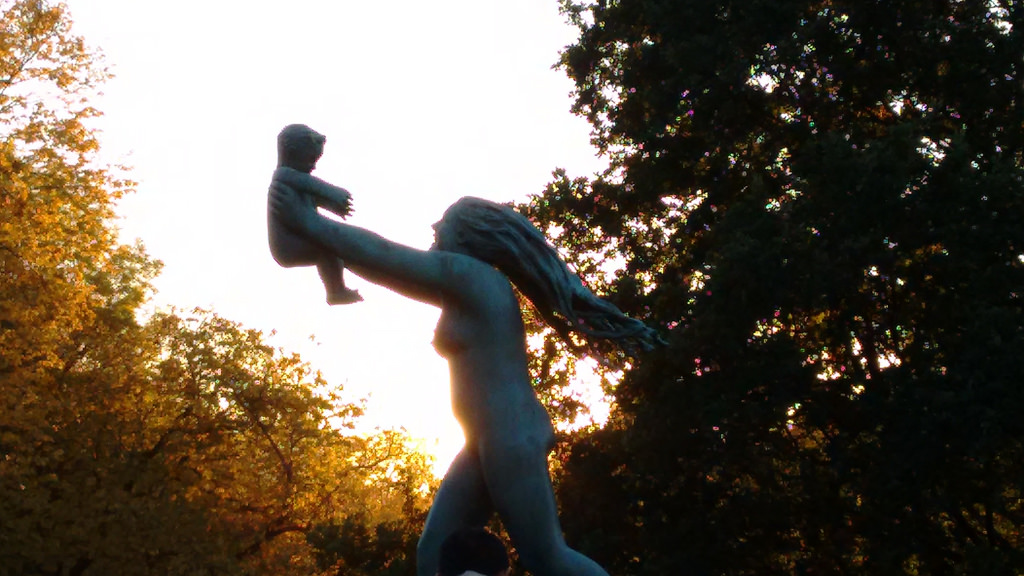
We spent the day at the Norsk Folkemuseum – The Norwegian Museum of Cultural History – and it was the kind of museum that scratched all the right itches for me: a museum focused almost exclusively on how regular everyday people live their regular everyday lives. In other words houses, farm yards, gardens, apartments, shops, barns; a collection spanning hundreds of years.
While the collection of grass-roofed farm buildings was impressive, and the stave church was awe-inspiring, my favourite sections of the museum concerned history since 1960 – my history, in other words, albeit in Norway. There was a gasoline station. An apartment block with each apartment decorated for a different era. A corner shop. A working farm. The attention to detail was remarkable, the interpretation well-done (in English and Norwegian) and, given the beautiful weather today for our visit, the afternoon walk a welcome respite from urban tourism.
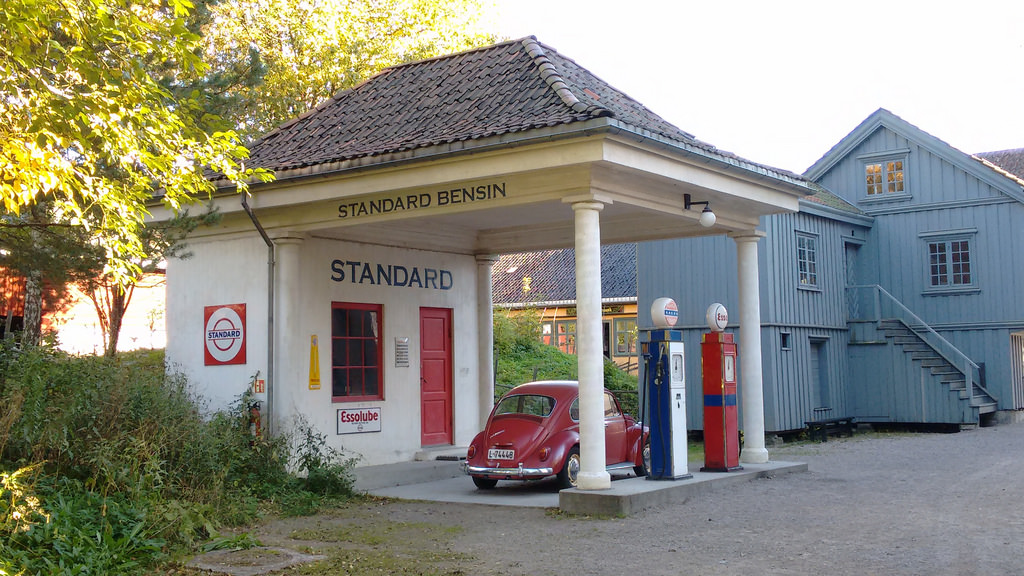
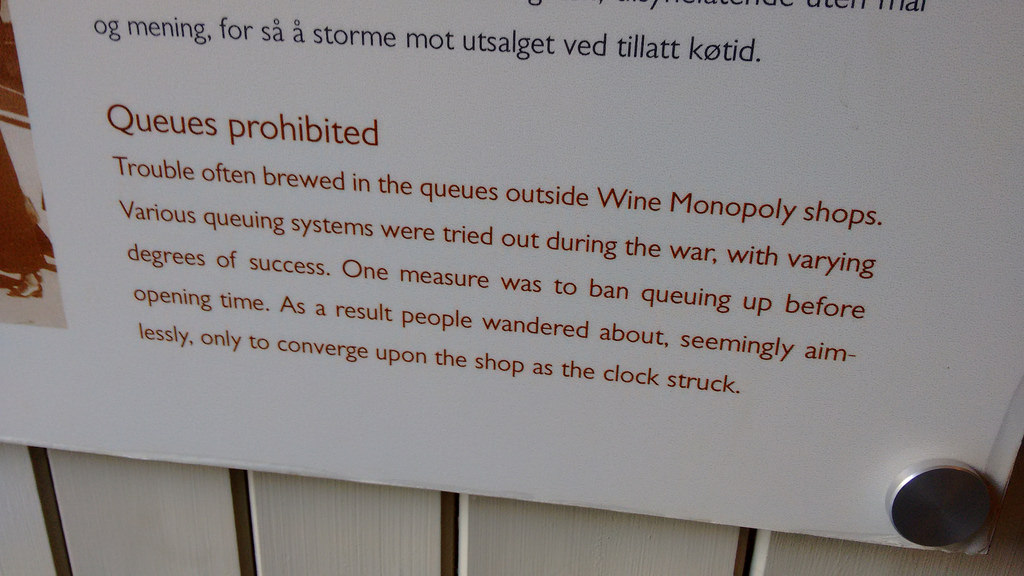
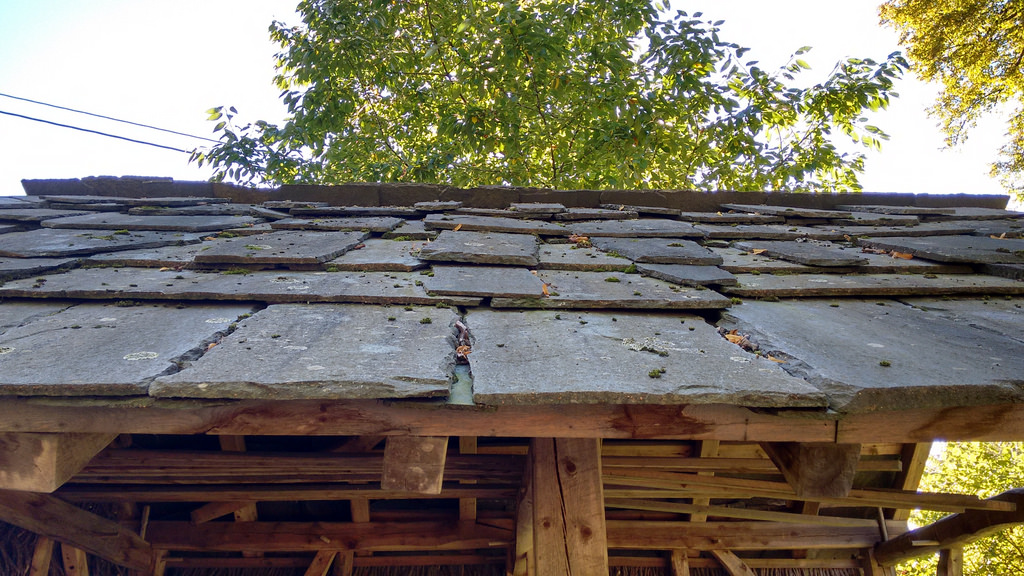
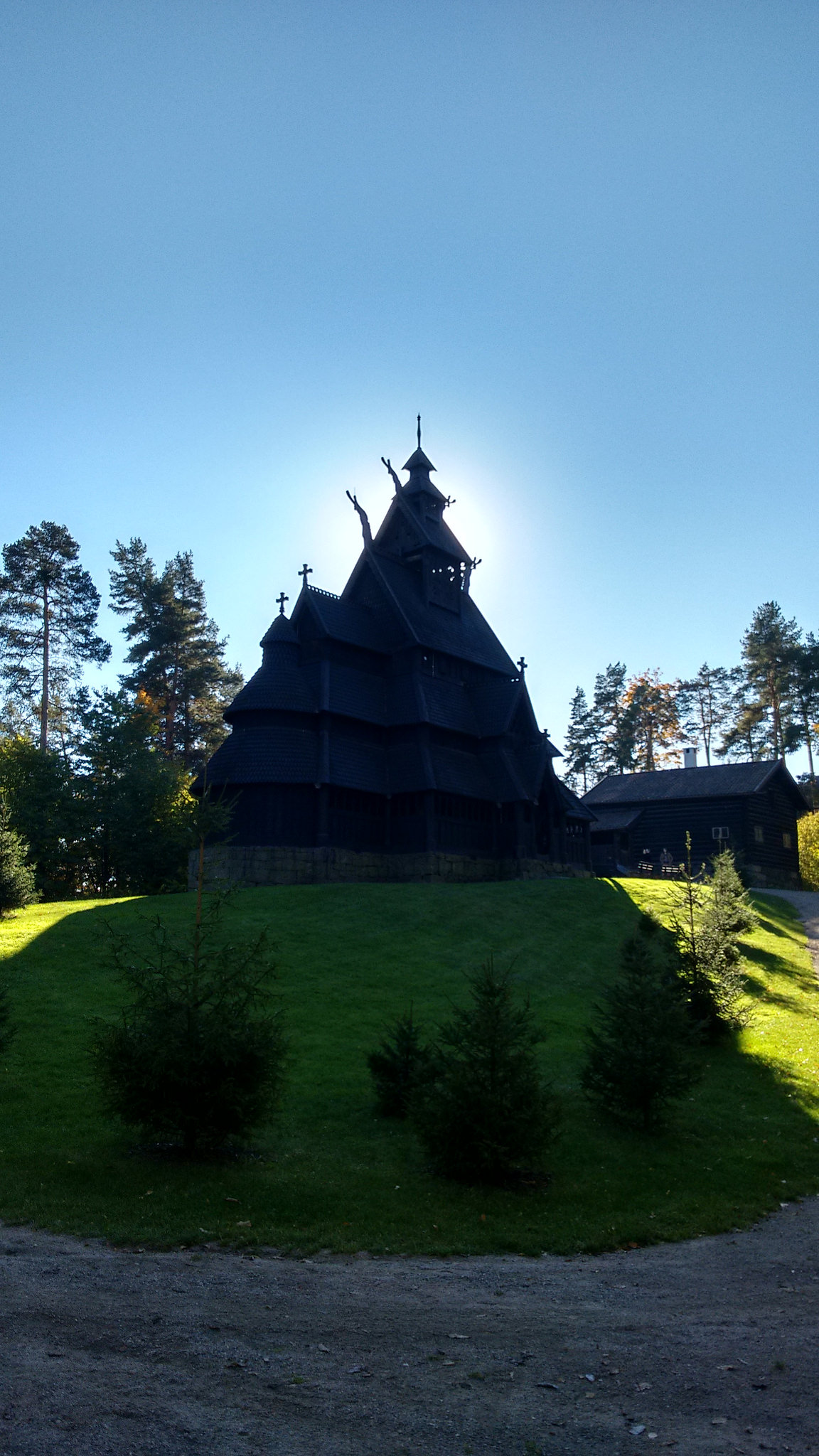
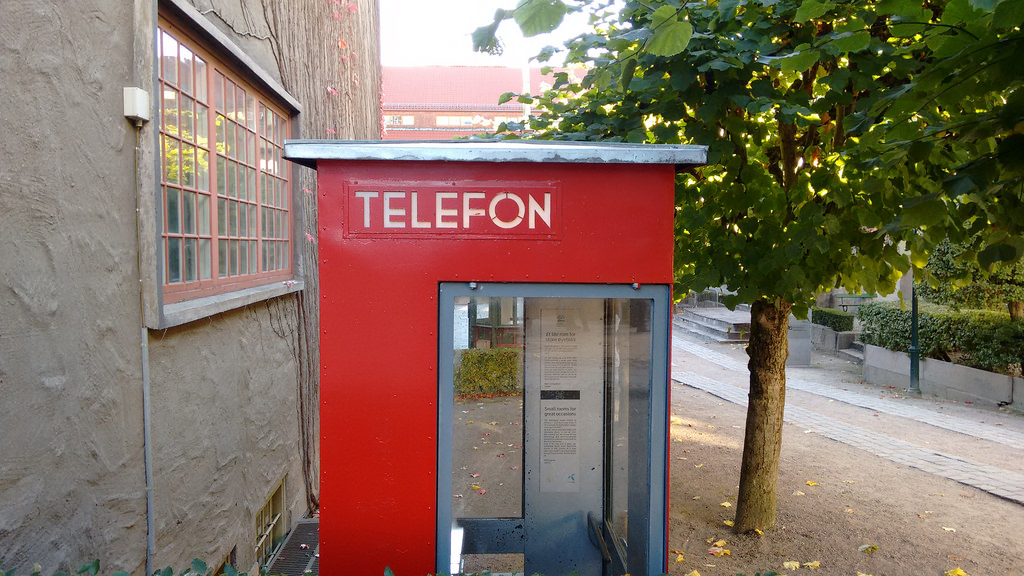
The Folkemuseum is located in a museum-rich district of Oslo: nearby is the Viking Ship Museum is right next door, and that’s where we spent the late morning. I found myself unexpectedly moved by the Viking burial ships on display there, and, especially, by the artifacts found within them (leather shoes, cooking implements, sledges, fabric).
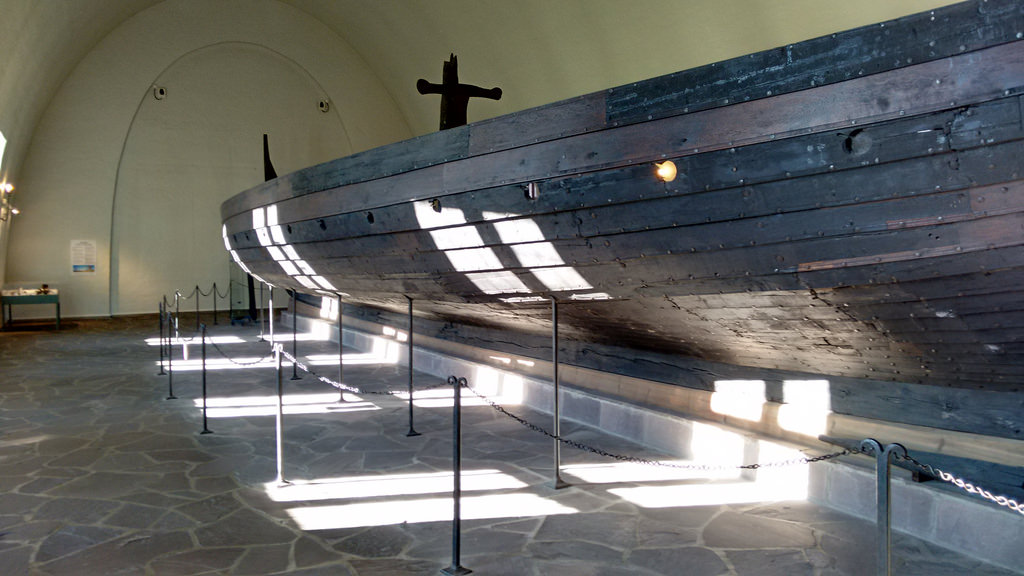
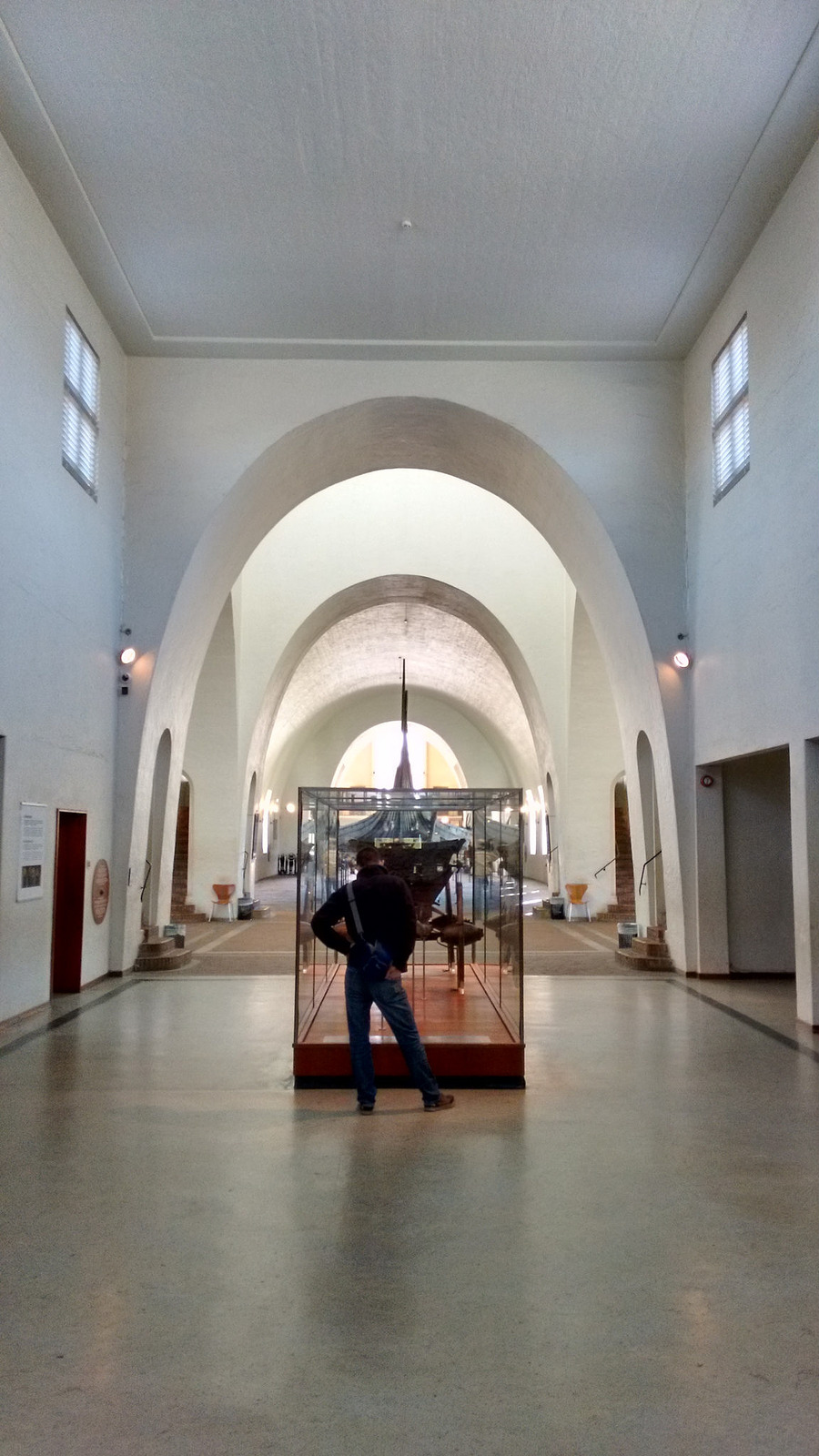
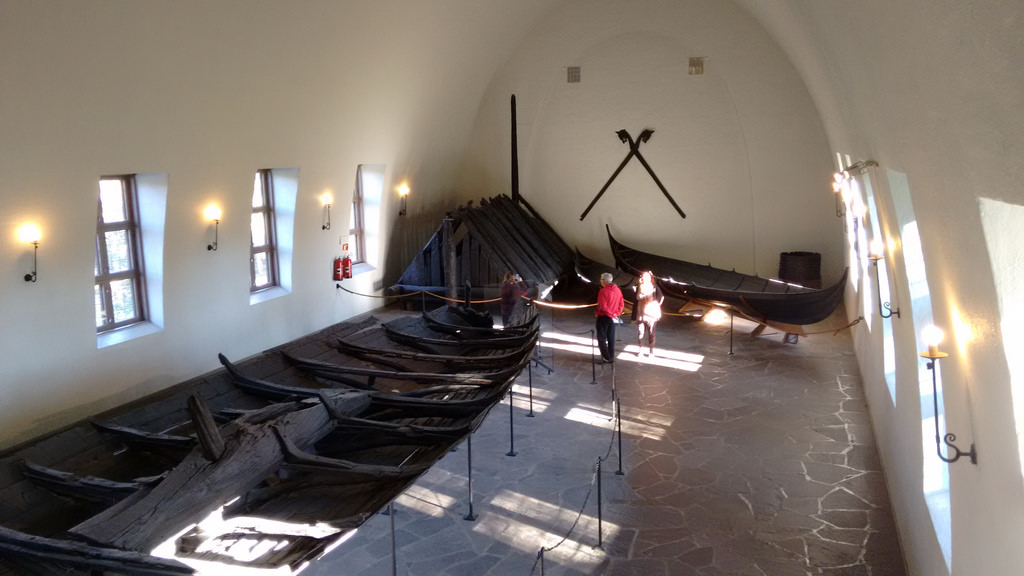
 I am
I am